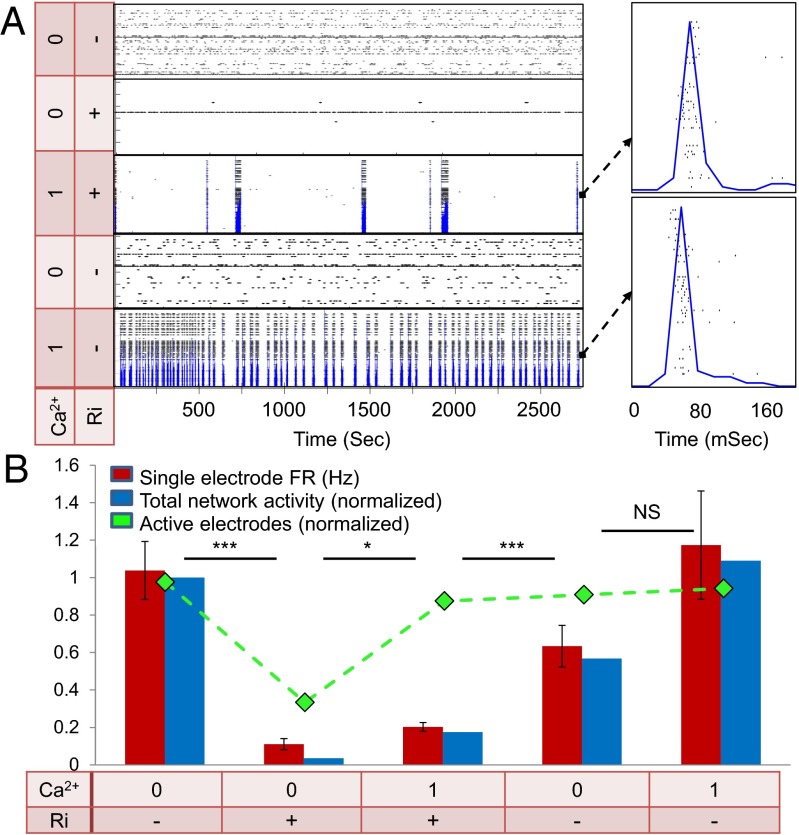Fig. 4.
Intrinsic excitability mechanism is mediated by a persistent sodium leak current. (A) Raster of single neuron activity for 30 electrodes in a sample culture under different conditions of calcium and riluzole. Blue traces are the sum over spikes in all of the electrodes per 20-ms bins, representing total network activity. The lowest two panels are after washing out of the riluzole. (Right) Blow-up view of a single network burst in the 1 mM [Ca2+]o conditions, either with riluzole (Top) or after washing it out (Bottom). (B) Effect of riluzole on single electrode and network activity. As a baseline for comparison and normalization, 0 mM [Ca2+]o and no riluzole (Ri) are used. Single electrode firing rates (red bars), relative number of active electrodes (green curve), and network activity (blue bars) are greatly reduced by riluzole application at 0 mM [Ca2+]o (n = 57; t test: P < 0.0001). The network activity was calculated as the total number of recorded spikes divided by time (in seconds) and is presented as the change relative to the condition before riluzole. Adding 1 mM calcium results in only a small recovery in firing rates (t test: *P < 0.05; ***P < 0.001) and total activity, but the number of active electrodes is concurrently almost completely recovered in these conditions. The effect of riluzole is most pronounced in the total network activity (blue bars), which actually equals the value of the single electrode activity (red bars) multiplied by the value of the number of active electrodes (green curve).

